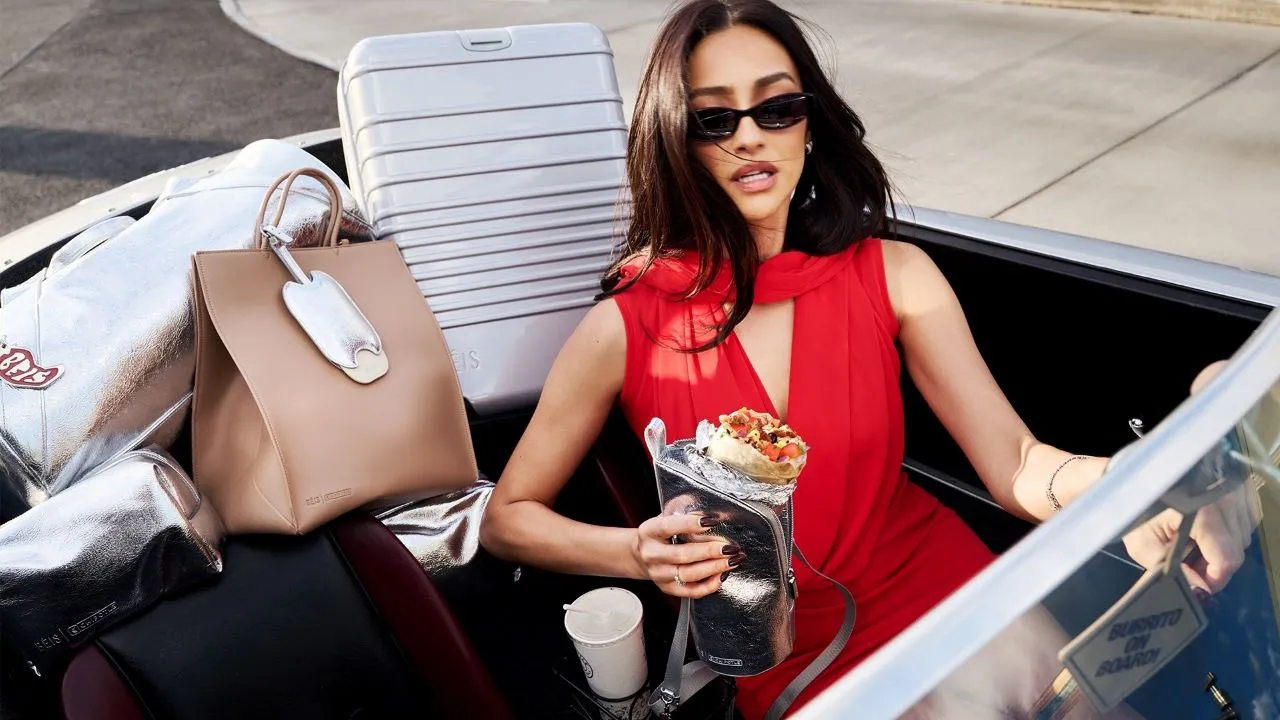Brands occupy the crossroads where perception meets action, blending individual identity with consumer choices. Their power lies in bridging this gap, weaving narratives that resonate deeply and guide behaviour. In this intricate interplay between consumers and brands, design, persuasion, and authenticity meld to create a landscape where brands are more than just products; they are companions on the journey of self-discovery and expression.
Erewhon, the celebrated upscale organic grocer, stands as a prime example of this phenomenon, having transformed the act of grocery shopping into a lifestyle statement. Its emergence as a hub for health-conscious consumers, celebrities, and influencers has positioned it as a cultural sensation, fundamentally altering perceptions of what a grocery store can be. Through its offering of high-quality products within an aspirational atmosphere, Erewhon has not only captured the hearts of consumers but also redefined the boundaries of the competitive grocery industry.

The Rise of Erewhon's Allure
Once merely a single, unremarkable store on Beverly Boulevard, Erewhon has blossomed into a multi-location powerhouse that transcends the traditional grocery shopping experience. Vogue has dubbed it a "health-food holy site," the New York Times christened it "the unofficial hangout for the young, beautiful and bored," and Vanity Fair declared it the "hottest pandemic club in Los Angeles." Erewhon's blend of wellness-focused offerings, meticulous merchandise curation, and trendy cafes has propelled it beyond the realm of a typical grocery store.
In 1979, Tom DeSilva, who was an employee at the time, took over the brand following its bankruptcy. Many years later, in 2011, Tony and Josephine Antoci acquired the last standing store on Beverly Boulevard from Tom DeSilva's widow. Owner Tony Antoci's decision to acquire Erewhon in 2011 marked the beginning of a remarkable transformation. From that single store, Erewhon has expanded to seven stores across Los Angeles County, embracing a slow-growth strategy that emphasises small-format stores strategically placed in affluent communities. The company's focus on emerging brands, private-label items, and prepared foods has resonated with its health-conscious customer base.

A Lifestyle Beyond Grocery Shopping
What sets Erewhon apart is its ability to offer more than just groceries. It has become a place for socialising, wellness, and community-building. Erewhon has capitalised on the trend of healthy living and eating, particularly amplified by the pandemic, positioning itself as a destination that aligns with consumers' desire for holistic well-being.

Erewhon's success hasn't gone unnoticed by industry giants, but Antoci remains committed to preserving the brand's uniqueness. Unlike Whole Foods, which saw its identity shift after being acquired by Amazon, Erewhon aims to maintain its premium brand status and avoid losing its distinctiveness in the process. The company's steady expansion plans, supported by private equity investment, hint at its ambition to establish a national presence while staying true to its roots.
In the tale of Erewhon's rise to prominence, brand owners can uncover profound insights into the nuanced interplay between perception and consumer behavior.
The Perception-Action gap
Understanding how people perceive themselves and the choices they make is at the heart of effective branding, and the concept of the perception-action gap is central here—the difference between what people think and what they do. People may hold favourable perceptions of a brand, appreciating its values, aesthetics, and ethos, yet their actual consumer behaviour might not reflect these perceptions.
Brands aim to bridge this gap by aligning consumers' ideals with their behaviour. When successful, this alignment creates a symbiotic bond where consumers see the brand as an extension of themselves. Self-perception is key to this interplay. People are naturally drawn to brands that mirror or elevate their sense of self. Brands that match an individual's values and aspirations become an authentic expression of their identity. This connection fosters a sense of belonging, inviting consumers into a narrative that reinforces their self-view.
Erewhon's success is grounded in its ability to mirror and elevate its customers' sense of self. Through a curated selection of upscale organic products and an ambience that exudes health-conscious luxury, the brand effortlessly aligns with its customers' identities as health enthusiasts. As Tony Antoci, Erewhon's CEO, aptly puts it, "There's no cutting corners with your health." This alignment of values and aspirations transforms Erewhon into an authentic expression of its customers' ideals, fostering a sense of belonging and unity. This sentiment is echoed by Erewhon customer Gregg Miele, a fitness trainer, who praises the store for its "Michelin-star standard for a grocery store."
Erewhon's Blueprint
While perception lays the groundwork, consumer behaviour translates these perceptions into real actions. Consumer choices mirror self-image, influenced by external factors such as societal norms and economic realities. Brands that understand and leverage these factors can turn passive perceptions into active engagement. But how do they do this? Two fundamental strategies—persuasion and design—come to the forefront.
Persuasion. Brands use various strategies to guide consumer behaviour. Through emotive storytelling and relatable endorsements, brands craft narratives that deeply resonate. Erewhon, for instance, paints a compelling narrative. The endorsement of Erewhon by prominent figures and renowned celebrities, such as Hailey Bieber and the Kardashians, amplifies the authenticity of the brand's narrative, reinforcing its resonance.

Design. Visual aesthetics and sensory experiences are powerful tools that forge connections between self-perception and brand engagement. A well-designed logo, thoughtful packaging, or immersive website can evoke emotions that go beyond consumption, building brand loyalty and influencing decisions. Erewhon's well-designed stores, carefully curated products, and immersive experiences created sensory stimuli that reinforced customers' self-perception.
In the tale of Erewhon's rise, brand owners find a living blueprint for navigating the complex relationship between perception and consumer behaviour. This journey encompasses the perception-action gap, the role of self-perception, and the transformation from perception to action. As Erewhon's success attests, brands that deftly tread this path create an authentic symbiosis with their consumers, transforming products into profound expressions of identity and companions in the quest for self-discovery and expression.






.svg)


.svg)
.svg)






